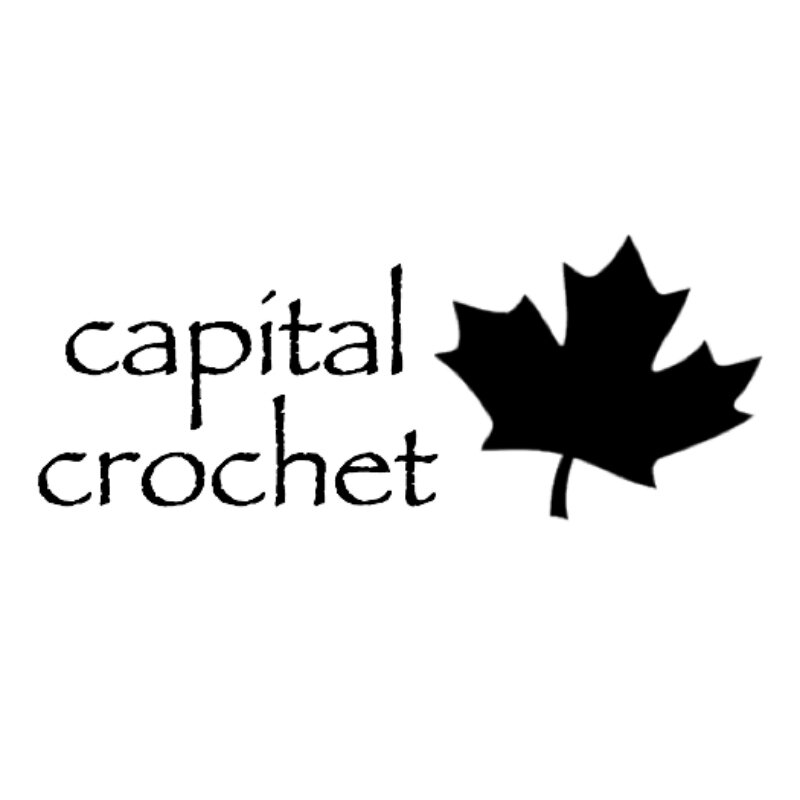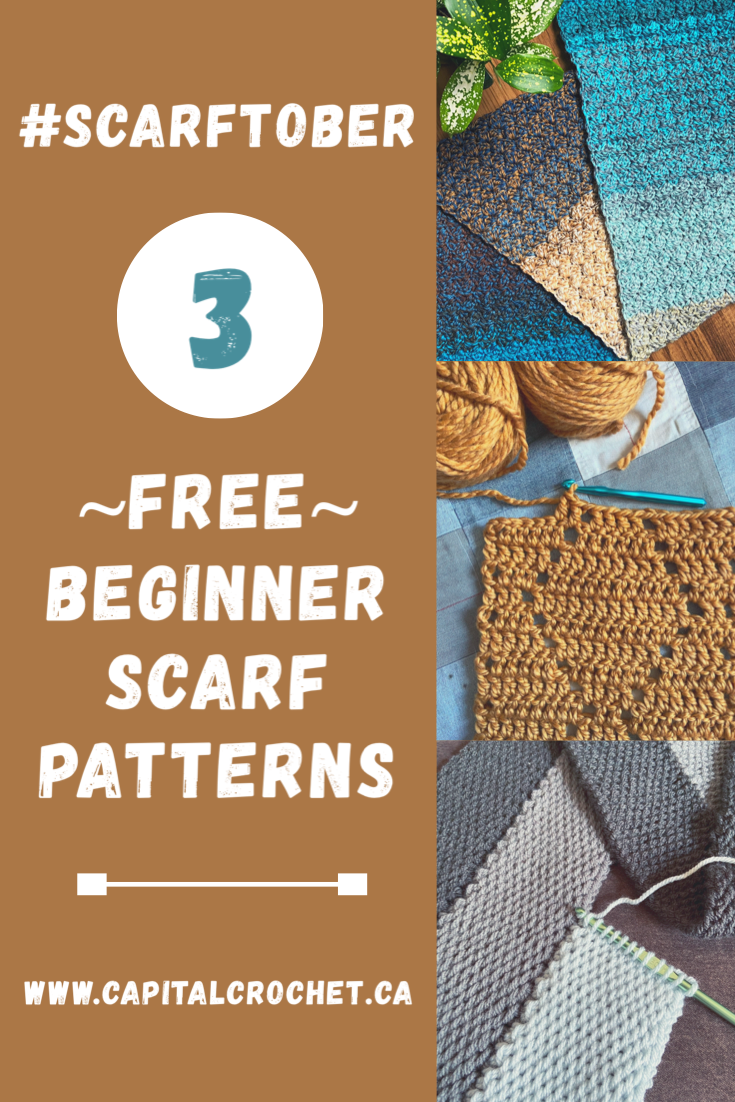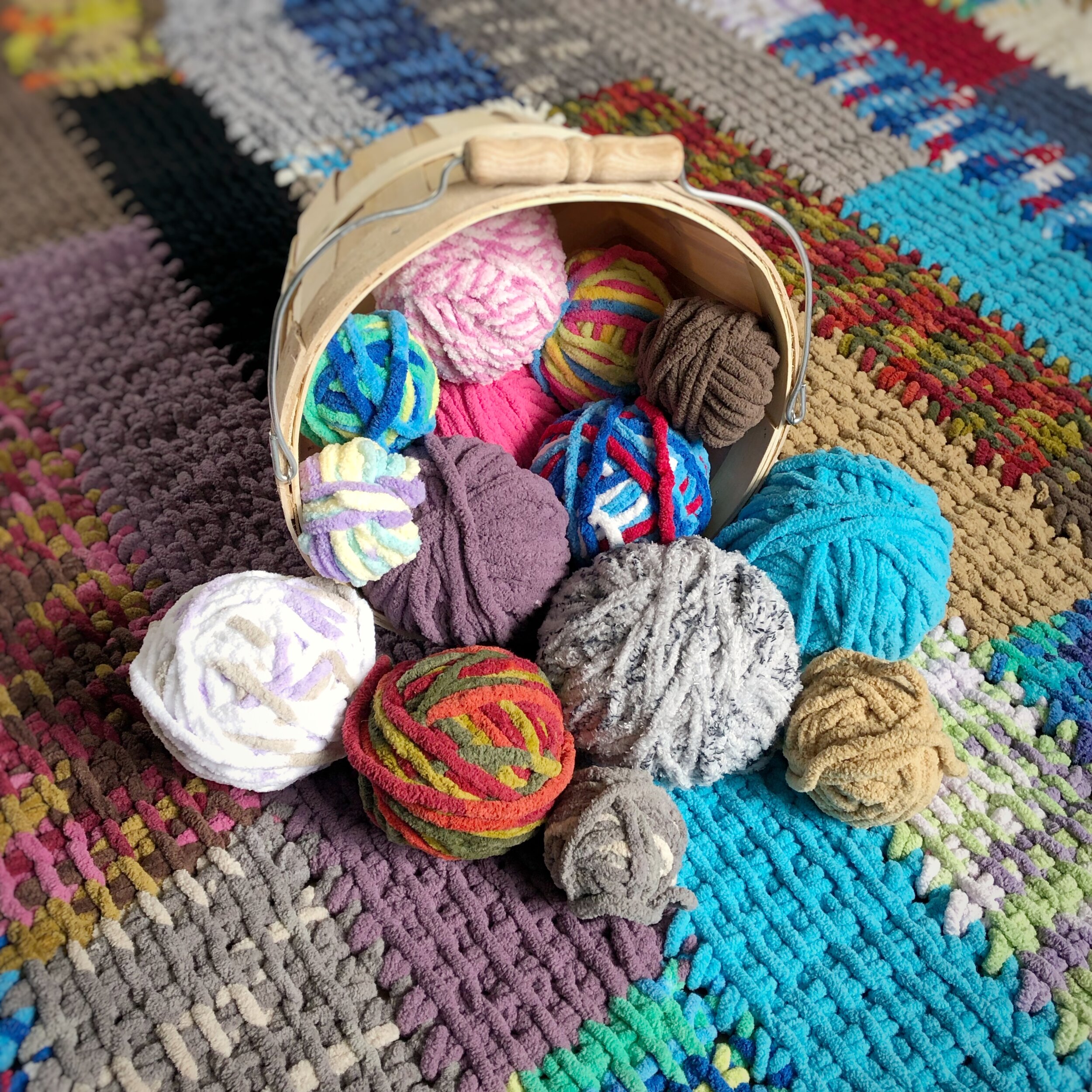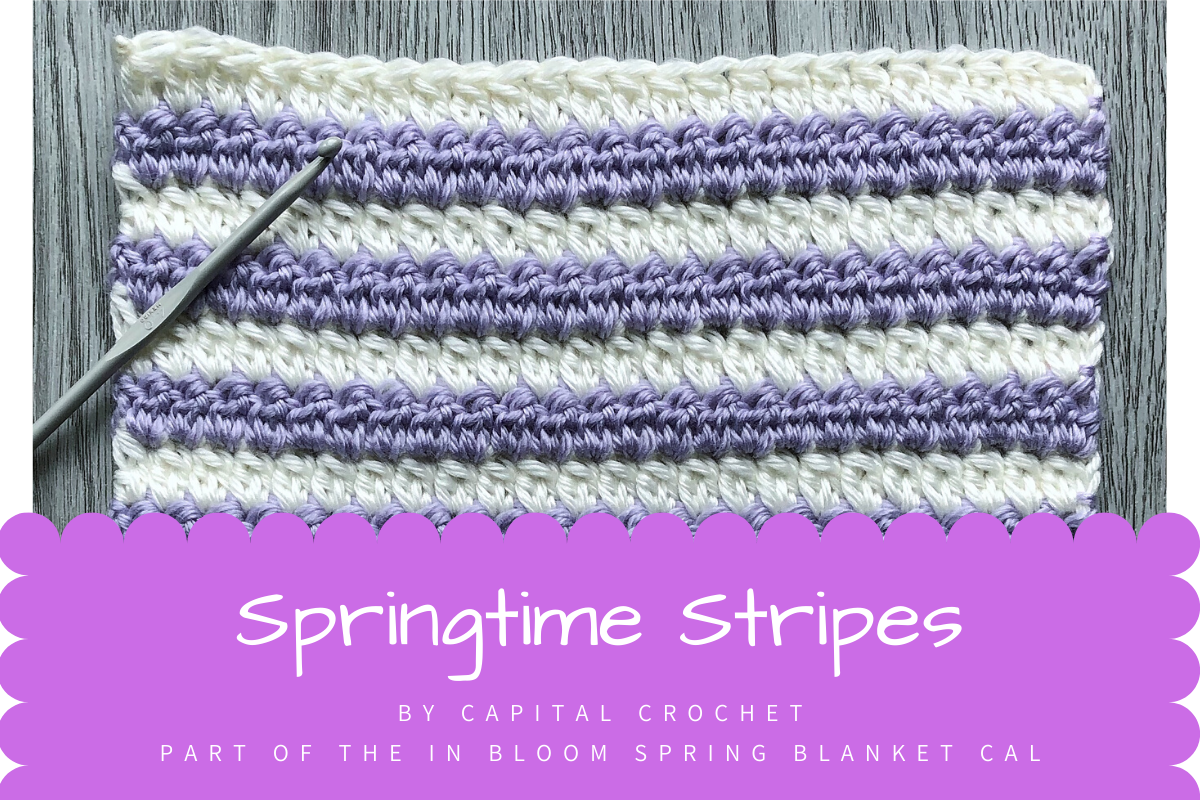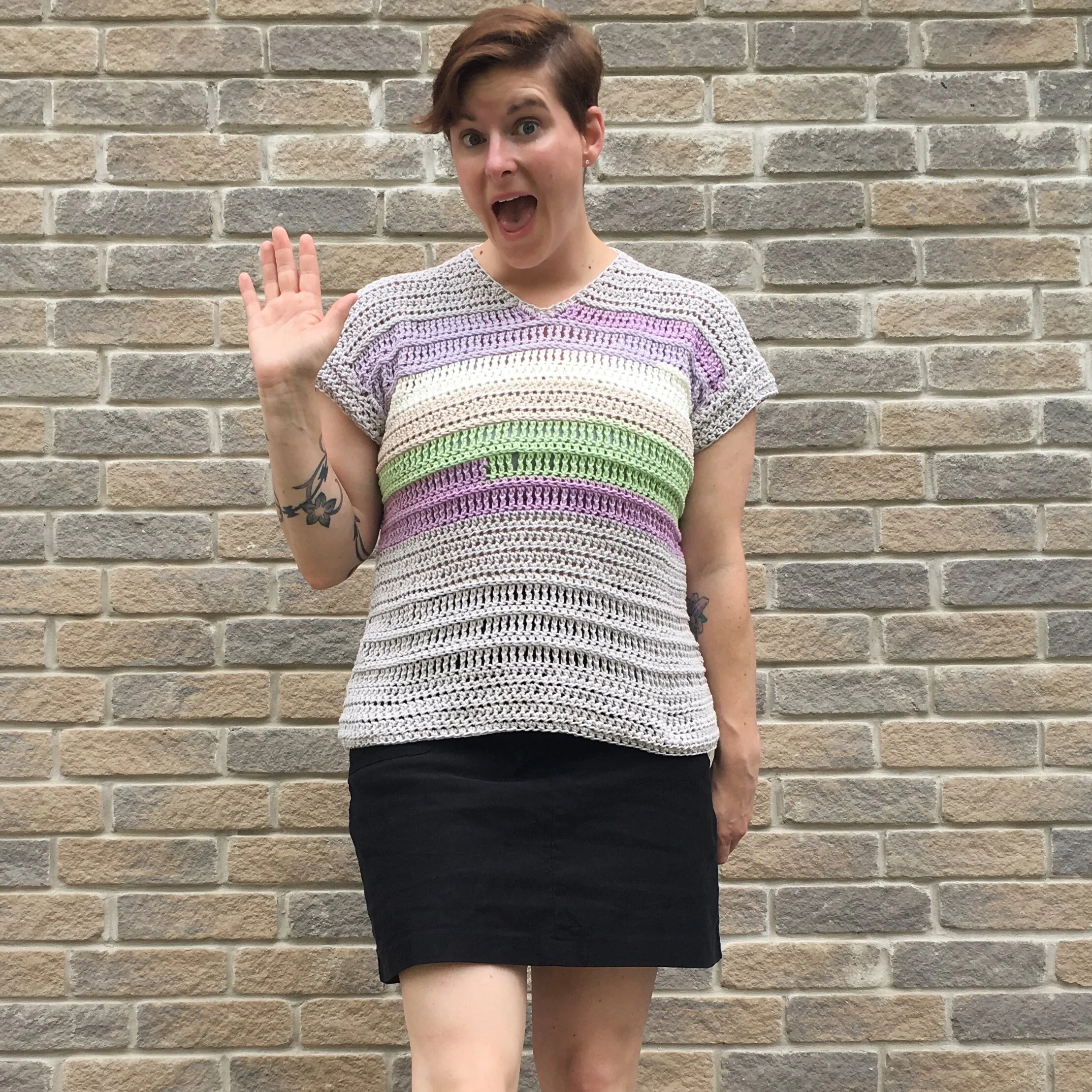The Stashdown Scarf - a FREE Scarftober pattern
/This post may contain affiliate links, meaning that if you click through and make a purchase, I earn a small commission at no extra cost to you. This helps support my business and makes it possible for me to bring you free content.
Well folks, it is officially Winter, because it SNOWED for the first time this year while I was outside taking pics for this pattern. It’s a good thing this latest pattern is thick and cozy, because I think those warm Fall days are behind us now…
I have really enjoyed Scarftober, and I hope you have too. I’m definitely thinking this should be an annual thing - what do you say? In case you missed them, check out the other two free patterns from earlier this month, the Cozy Clusters Infinity pattern, and The Diamond Scarf pattern. This new one, the Stashdown Scarf, just might be my favourite!
I love a good stashbusting pattern, don’t you? The Stashdown Scarf is an easy, repetitive pattern that is completely customizable. It’s perfect for clearing some space on your shelves so you can finally treat yourself guilt-free to a sweater quantity at your favourite dyer’s next shop update (this may or may not be EXACTLY what I plan to do). I’ve used worsted weight here, but you can use whatever you have!
Look at that SQUISH! This stitch pattern really creates a warm and cozy fabric, no matter what size yarn you use. Now, this is a Tunisian crochet pattern, but if you’ve never tried this craft before, fear not! You won’t need any special hooks, and I’ve linked below to my favourite videos from the Queen of Tunisian herself, Toni at TL Yarn Crafts! Take a few minutes to get familiar with the Tunisian Full Stitch and the Join As You Go technique, then come on back when you’re ready to get started.
I do plan to offer an ad-free, printable pdf version of the pattern very soon but for now, follow along below for the beginner-friendly directions, and get started on your very own Stashdown Scarf today!
Materials
Hook - US J/6mm, or size needed to meet gauge.
Yarn - 3 different colours of worsted (4) weight, approximately 280 yds each.
Notions - scissors, tape measure, yarn needle, 9” piece of cardboard or book to make the fringe.
Optional - blocking mats and pins.
Sizing
Gauge - 7 sts x 7 rows = 2” in Tunisian Full Stitch.
Finished measurements - approximately 72” long x 9.5” wide (not including fringe).
Terminology/Abbreviations
This pattern uses standard US terms as detailed by the Craft Yarn Council:
Ch - chain
St(s) - stitch(es)
Sl st - slip stitch
Tfs - Tunisian Full Stitch (see tutorial video above)
Lts - last Tunisian stitch (insert hook under both loops of the edge stitch and pull up a loop)
RetP - Return Pass
Notes
This pattern is worked in 3 “strips.” The first strip is worked in regular tfs. The second and third strips are joined onto the side of the previous strip - no seaming in this pattern, my friends! For a great tutorial on the Join As You Go method, see the video above.
The first loop on the hook counts as the first stitch for each row.
For the first strip, the RetP is worked as follows: Ch 1, *yarn over and pull through 2 loops on hook. Repeat from * until 1 loop remains.
For the second and third strips, the RetP is worked as follows: Join with a sl st to the edge of the previous strip. *Yarn over, pull through 2 loops on hook. Repeat from * until 1 loop remains.
Pattern Instructions
First Strip
Row 1. Ch 12 and turn. Working into the back bumps of the ch sts, and starting in the second ch from hook, pull up a loop in each back bump (12 loops on hook). Work a RetP.
Row 2. Starting in the first space (between the first and second sts), tfs 10. Skip the last space, Lts and work a RetP.
Row 3. Skip the first space, tfs 10, Lts and work a Ret P.
Alternate Rows 2 and 3 until your work measures approximately 71” long (end on a repeat of Row 3).
Last row (bind off): Ch 1, starting in the first space, *insert hook as for tfs and pull up a loop. Yarn over, pull though both loops on the hook. Repeat from * in each space until one space remains. Skip the last space, insert hook into the last stitch as for Lts, yarn over and pull through both loops on the hook. Fasten off and weave in ends.
Second and Third Strips
Row 1. Attach yarn at the bottom right corner of the previous strip, ch 12 and turn. Working into the back bumps of the ch sts, and starting in the second ch from hook, pull up a loop in each back bump (12 loops on hook). Join with a sl st to Row 1 of the previous strip and work a RetP.
Row 2. Starting in the first space (between the first and second sts), tfs 11. Join with a sl st in the side of the first st of the next row on the previous strip and work a RetP.
Row 3. Skip the first space, tfs 11. Join with a sl st in the side of the first st of the next row on the previous strip and work a RetP.
Alternate Rows 2 and 3 until you’ve joined to each row of the previous strip, minus the last (bind off) row.
Last row (bind off): Ch 1, starting in the first space, *insert hook as for tfs and pull up a loop. Yarn over, pull though both loops on the hook. Repeat from * in each space until one space remains. Skip the last space, join with a sl st to the ch st of the previous strip’s last row. Fasten off and we in ends.
Blocking
Prior to adding the fringe, you may wish to block your work to straighten things out (sometimes Tunisian crochet tends to lean a little bit). Block your scarf according the fibre you’ve used - either wet block or steam block. Once your scarf is dry, you can move on to attaching the fringe.
Fringe
To create the fringe, wrap yarn loosely but securely around your piece of cardboard or book. You don’t want any slack in your wraps but you also don’t want it to be stretched tight. Cut your wrapped yarn along one end only. You will need 216 pieces of yarn approximately 18” in length. I chose to do my fringe colour blocked and matching my strips, meaning I used 36 pieces of each colour per end. Feel free to mix up your colours!
Insert your hook into the first stitch on one of the short ends, and grab 3 strands of fringe with your hook. Pull a loop through, then pull the ends of the fringe through the loop. Cinch it down to tighten the fringe. Repeat in each stitch across both short ends of your scarf. Trim your fringe as needed, and you may wish to steam it to straighten out the strands.
Variations
Make an infinity scarf by omitting the fringe and seaming the short ends together to form a big loop.
Try different yarn weights and fibre content for a lighter or thicker scarf.
Adjust the length by working fewer or more rows of each strip. Adjust the width of your scarf by adjusting the number of strips, or the number of chain stitches in Row 1 of each strip. You can even make them uneven for an abstract effect.
Try variations on the fringe by making your pieces shorter or longer, or by placing fringe in every other or every third stitch. Leave the fringe off completely if it’s not your thing, or try tassels or poms!
Congratulations on finishing your fabulous new Stashdown Scarf! Share your pics on social media and tag me @capital.crochet and use the hashtag #StashdownScarf.
You may sell finished items made from this pattern, but please credit me as the designer by linking back to this blog post.
Thank you so much for your support!
Hey, Stashbuster! If you are looking for more patterns to help you work through your glorious yarn stash, check out these helpful patterns. Shown below are the Stashdown Blanket and Stashdown Pillow, available in my pattern shop, or on Etsy and Ravelry. Check out the Stashdown Blanket as a FREE pattern here on the blog, too!
Happy crocheting, friends!
